The Effect of Ordinary Portland Cement Substitution on the Thermal Stability of Geopolymer Concrete
Abstract
:1. Introduction
2. Materials and Methods
2.1. Materials
2.2. Specimen Preparation
2.3. Heating Details
2.4. Determination of Mass Loss by High Temperature Exposure
2.5. Compressive Strength Test
2.6. Scanning Electron Microscopic Images
2.7. Thermogravimetric Analysis (TGA)
3. Results and Discussions
3.1. Mass Change by High Temperature Exposure
3.2. Compressive Strength after Exposure to Elevated Temperatures
3.3. Microstructure Investigation
4. Conclusions
- The mass loss occurred at temperatures up to 200 °C accounted for more than 50% of the entire mass loss, which mainly resulted from the evaporation of free water and chemically bound water. The mass loss ratio increased with the cement content, which was caused by the continuous dehydroxylation of C-S-H gels as well as the disintegration of Ca(OH)2 at elevated temperatures.
- All the FAGCs performed higher compressive strength than their original compressive strength up to 200 °C, which was due to the secondary geopolymerization resulting from unreacted fly ash and alkaline solution. FAGCs without cement experienced higher strength enhancement than those containing cement. More impressive, FAGCs without cement retained higher compressive strength than its original compressive strength until 600 °C.
- The SEM images demonstrated that the compressive strength enhancement resulted from secondary geopolymerization that produced further geopolymer gels and improved the concrete microstructure. SEM, TGA and DTG results revealed that the compressive strength loss occurred at temperatures higher than 200 °C was mainly caused by the microstructure deterioration and the continuous dehydroxylation of N-A-S-H gel.
- Compressive strength of FAGCs increased with the cement dosages up to 200 °C because of the existence of C-S-H gels and filler effect of cement. According to the SEM results, the fact that cement was beneficial for improving microstructure of FAGCs caused the compressive strength enhancement.
- The inclusion of cement increased the Ca/Si ratio, which resulted in an increase in the quantity of calcium compounds with strong thermal expansion properties. Therefore, FAGCs containing cement suffered from more severe strength loss and microstructure deterioration than FAGCs without cement at temperatures higher than 200 °C.
Author Contributions
Funding
Acknowledgments
Conflicts of Interest
References
- Davidovits, J. Geopolymers and geopolymeric materials. J. Ther. Anal. 1989, 35, 429–441. [Google Scholar] [CrossRef]
- Duxson, P.; Fernández-Jiménez, A.; Provis, J.L.; Lukey, G.C.; Palomo, A.; van Deventer, J.S.J. Geopolymer technology: the current state of the art. J. Mater. Sci. 2007, 42, 2917–2933. [Google Scholar] [CrossRef]
- Nath, P.; Sarker, P. Fly ash based geopolymer concrete: A review. New Dev. Struct. Eng. Constr. 2013, 1091–1096. [Google Scholar] [CrossRef]
- Bucher, R.; Diederich, P.; Escadeillas, G.; Cyr, M. Service life of metakaolin-based concrete exposed to carbonation: Comparison with blended cement containing fly ash, blast furnace slag and limestone filler. Cem. Concr. Res. 2017, 99, 18–29. [Google Scholar] [CrossRef]
- Ding, Y.; Bai, Y.L. Fracture Properties and Softening Curves of Steel Fiber-Reinforced Slag-Based Geopolymer Mortar and Concrete. Materials. 2018, 11, 1445. [Google Scholar] [CrossRef] [PubMed]
- Diaz-Loya, E.I.; Allouche, E.N.; Vaidya, S. Mechanical properties of fly-ash-based geopolymer concrete. ACI Mater. J. 2011, 108, 300. [Google Scholar]
- Adam, A. Strength and durability properties of alkali activated slag and fly ash-based geopolymer concrete. Ph.D. Thesis, RMIT University, Melbourne, Australia, 2009. [Google Scholar]
- Shi, X.S.; Collins, F.G.; Zhao, X.L.; Wang, Q.Y. Mechanical properties and microstructure analysis of fly ash geopolymeric recycled concrete. J. Hazard. Mater. 2012, 237–238, 20–29. [Google Scholar] [CrossRef] [PubMed]
- Nath, P.; Sarker, P.K. Effect of GGBFS on setting, workability and early strength properties of fly ash geopolymer concrete cured in ambient condition. Constr. Building Mater. 2014, 66, 163–171. [Google Scholar] [CrossRef] [Green Version]
- Aslani, F.; Asif, Z. Properties of ambient-cured normal and heavyweight geopolymer concrete exposed to high temperatures. Materials 2019, 12, 740. [Google Scholar] [CrossRef]
- Xie, T.; Ozbakkaloglu, T. Behavior of low-calcium fly and bottom ash-based geopolymer concrete cured at ambient temperature. Ceram. Int. 2015, 41, 5945–5958. [Google Scholar] [CrossRef]
- Nath, P.; Sarker, P.K. Use of OPC to improve setting and early strength properties of low calcium fly ash geopolymer concrete cured at room temperature. Cem. Concr. Compos. 2015, 55, 205–214. [Google Scholar] [CrossRef]
- Hongen, Z.; Feng, J.; Qingyuan, W.; Ling, T.; Xiaoshuang, S. Influence of Cement on Properties of Fly-Ash-Based Concrete. ACI Mater. J. 2017, 114, 745–753. [Google Scholar] [CrossRef]
- Zhang, H.; Shi, X.; Wang, Q. Effect of Curing Condition on Compressive Strength of Fly Ash Geopolymer Concrete. ACI Mater. J. 2018, 115, 191–196. [Google Scholar] [CrossRef]
- Sarker, P.K.; Kelly, S.; Yao, Z. Effect of fire exposure on cracking, spalling and residual strength of fly ash geopolymer concrete. Mater. Des. 2014, 63, 584–592. [Google Scholar] [CrossRef]
- Abdulkareem, O.A.; Al Bakri, A.M.M.; Kamarudin, H.; Khairul Nizar, I.; Saif, A.A. Effects of elevated temperatures on the thermal behavior and mechanical performance of fly ash geopolymer paste, mortar and lightweight concrete. Constr. Building. Mater. 2014, 50, 377–387. [Google Scholar] [CrossRef]
- Shaikh, F.U. Effect of cooling on the residual mechanical properties and cracking of plain and fibrous geopolymer concretes at elevated temperatures. Struct. Concr. 2019, 40. [Google Scholar] [CrossRef]
- Shaikh, F.U.; Vimonsatit, V. Compressive strength of fly-ash-based geopolymer concrete at elevated temperatures. Fire. Mater. 2015, 39, 174–188. [Google Scholar] [CrossRef]
- ASTM, C. Standard specification for coal fly ash and raw or calcined natural pozzolan for use in concrete. ASTM Int. 2012, 04.02. [Google Scholar] [CrossRef]
- GB 175-2007 Common Portland Cement; Standards Press of China: Beijing, China, 2007.
- Ministry of Transport of the People’s Republic of China/Chinese Planning. GB/T 50081-2002 Standard for Test Method of Mechanical Properties on Ordinary Concrete; Ministry of Transport of the People’s Republic of China/Chinese Planning: Beijing, China, 2003.
- Pan, Z.; Sanjayan, J.G.; Collins, F. Effect of transient creep on compressive strength of geopolymer concrete for elevated temperature exposure. Cem. Concr. Res. 2014, 56, 182–189. [Google Scholar] [CrossRef]
- Rashad, A.M. Potential use of phosphogypsum in alkali-activated fly ash under the effects of elevated temperatures and thermal shock cycles. J. Cleaner. Prod. 2015, 87, 717–725. [Google Scholar] [CrossRef]
- Rashad, A.M.; Zeedan, S.R. The effect of activator concentration on the residual strength of alkali-activated fly ash pastes subjected to thermal load. Constr. Build. Mater. 2011, 25, 3098–3107. [Google Scholar] [CrossRef]
- Fares, H.; Remond, S.; Noumowe, A.; Cousture, A. High temperature behaviour of self-consolidating concrete: microstructure and physicochemical properties. Cem. Concr. Res. 2010, 40, 488–496. [Google Scholar] [CrossRef]
- Laneyrie, C.; Beaucour, A.L.; Green, M.F.; Hebert, R.L.; Ledesertet, B.; Noumowe, A. Influence of recycled coarse aggregates on normal and high performance concrete subjected to elevated temperatures. Constr. Building. Mater. 2016, 111, 368–378. [Google Scholar] [CrossRef]
- Palomo, A.; Fernández-Jiménez, A.; Kovalchuk, G.; Ordoñez, L.M.; Naranjo, M.C. OPC-fly ash cementitious systems: study of gel binders produced during alkaline hydration. J. Mater. Sci. 2007, 42, 2958–2966. [Google Scholar] [CrossRef]
- Ranjbar, N.; Mehrali, M.; Alengaram, U.J.; Metselaar, H.S.C.; Zamin Jumaat, M. Compressive strength and microstructural analysis of fly ash/palm oil fuel ash based geopolymer mortar under elevated temperatures. Constr. Building. Mater. 2014, 65, 114–121. [Google Scholar] [CrossRef]
- Khoury, G.A. Compressive strength of concrete at high temperatures: a reassessment. Mag. Concr. Res. 1992, 44, 291–309. [Google Scholar] [CrossRef]
- Liu, X.; Ye, G.; De Schutter, G.; Yuan, Y.; Taerwe, L. On the mechanism of polypropylene fibres in preventing fire spalling in self-compacting and high-performance cement paste. Cem. Concr. Res. 2008, 38, 487–499. [Google Scholar] [CrossRef]
- Liu, X. Microstructural Investigation of Self-Compacting Concrete and High-Performance Concrete during Hydration and after Exposure to High Temperatures. Ph.D. Thesis, Université de Ghent, Belgique, March 2006. [Google Scholar]
- Andiç-Çakır, Ö.; Hızal, S. Influence of elevated temperatures on the mechanical properties and microstructure of self consolidating lightweight aggregate concrete. Constr. Build. Mater. 2012, 34, 575–583. [Google Scholar] [CrossRef]
- Nadeem, A.; Memon, S.A.; Lo, T.Y. Mechanical performance, durability, qualitative and quantitative analysis of microstructure of fly ash and Metakaolin mortar at elevated temperatures. Constr. Build. Mater. 2013, 38, 338–347. [Google Scholar] [CrossRef]
- Rahier, H.; Van Mele, B.; Wastiels, J. Low-temperature synthesized aluminosilicate glasses. Part II Rheological transformations during low-temperature cure and high-temperature properties of a model compound. J. Mater. Sci. 1996, 31, 80–85. [Google Scholar]
- Türkmen, İ.; Karakoç, M.B.; Kantarcı, F.; Maraş, M.M.; Demirboğa, R. Fire resistance of geopolymer concrete produced from Elazığ ferrochrome slag. Fire. Mater. 2016, 40, 836–847. [Google Scholar] [CrossRef]
- Zuhua, Z.; Xiao, Y.; Huajun, Z.; Yue, C. Role of water in the synthesis of calcined kaolin-based geopolymer. Appl. Clay Sci. 2009, 43, 218–223. [Google Scholar] [CrossRef]
- Van Jaarsveld, J.; Van Deventer, J.; Lorenzen, L. The potential use of geopolymeric materials to immobilise toxic metals: Part I. Theory and applications. Miner. Eng. 1997, 10, 659–669. [Google Scholar] [CrossRef]
- Chan, Y.; Peng, G.; Anson, M. Residual strength and pore structure of high-strength concrete and normal strength concrete after exposure to high temperatures. Cem. Concr. Compos. 1999, 21, 23–27. [Google Scholar] [CrossRef]
- Hussin, M.W.; Bhutta, M.A.R.; Azreen, M.; Ramadhansyah, P.J.; Mirza, J. Performance of blended ash geopolymer concrete at elevated temperatures. Mater. Struct. 2015, 48, 709–720. [Google Scholar] [CrossRef]
- Rickard, W.D.; Kealley, C.S.; Van Riessen, A. Thermally induced microstructural changes in fly ash geopolymers: Experimental results and proposed model. J. Am. Ceram. Soc. 2015, 98, 929–939. [Google Scholar] [CrossRef]
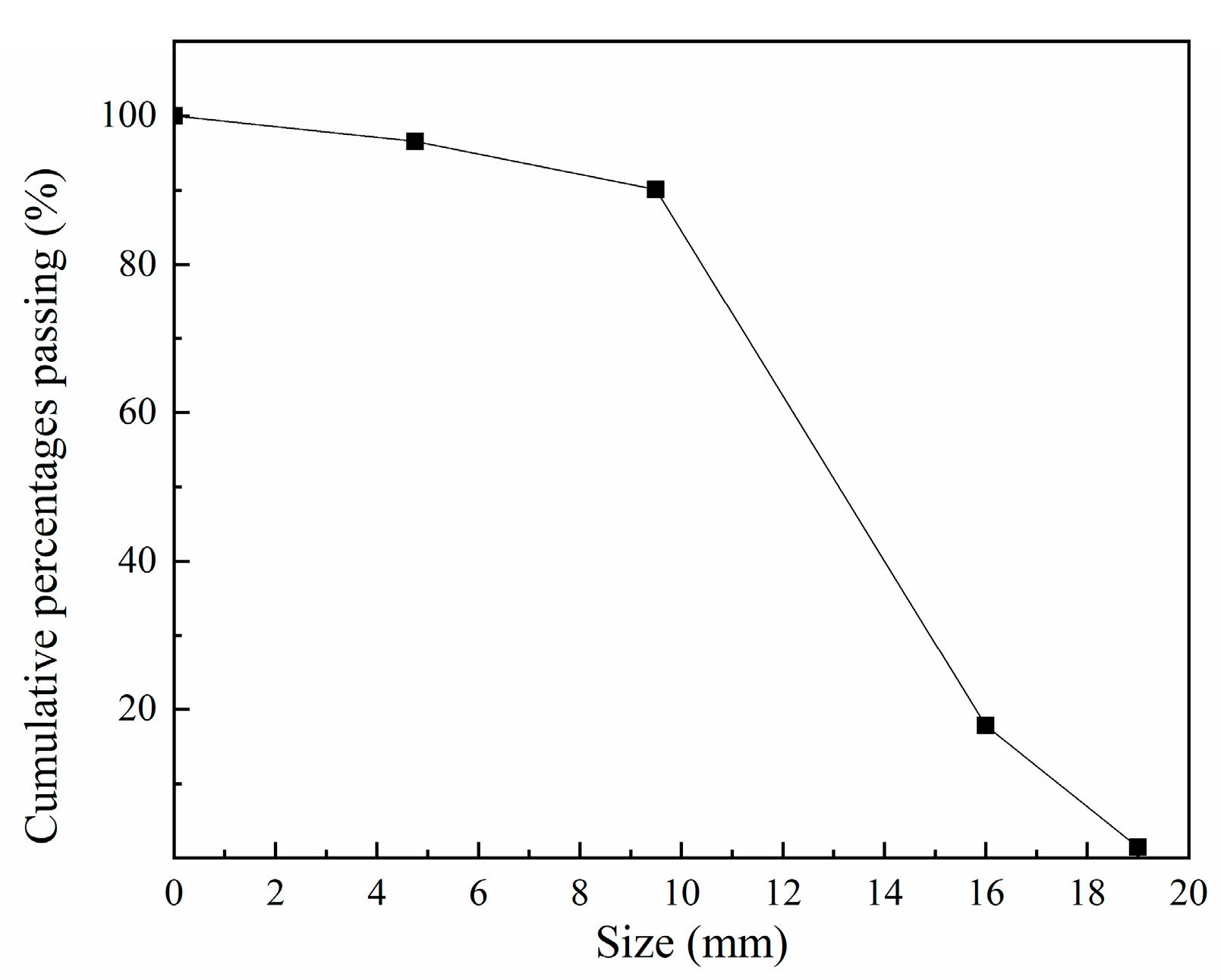
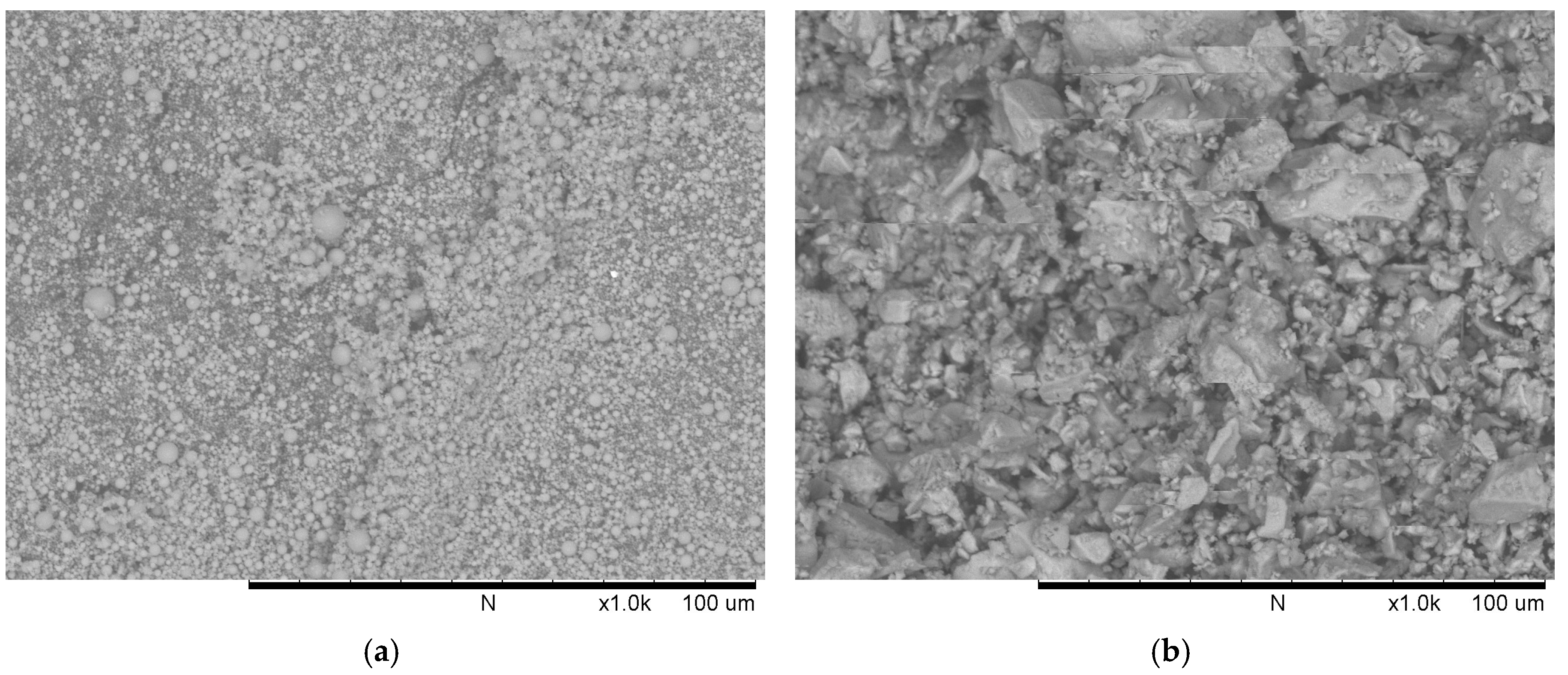
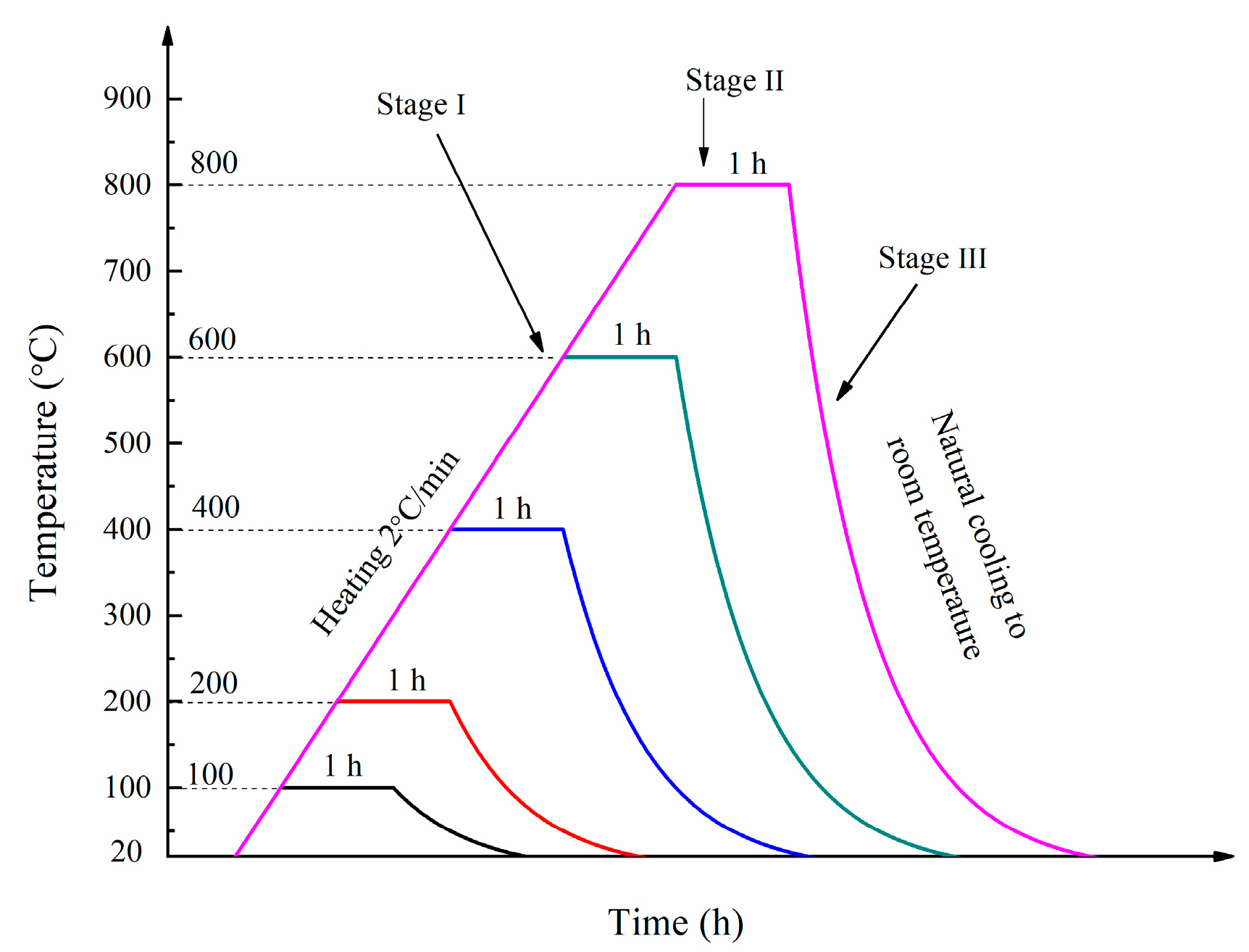
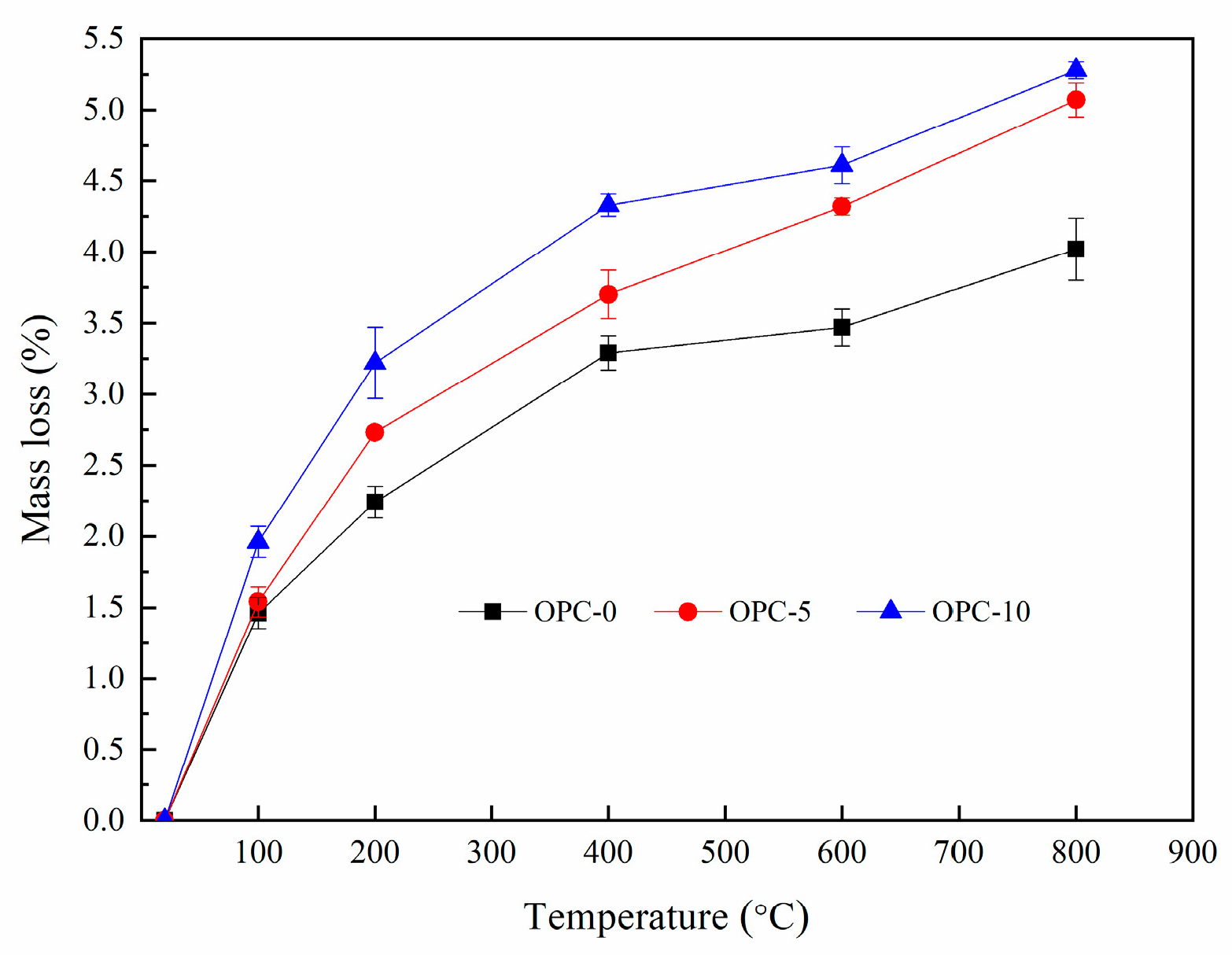
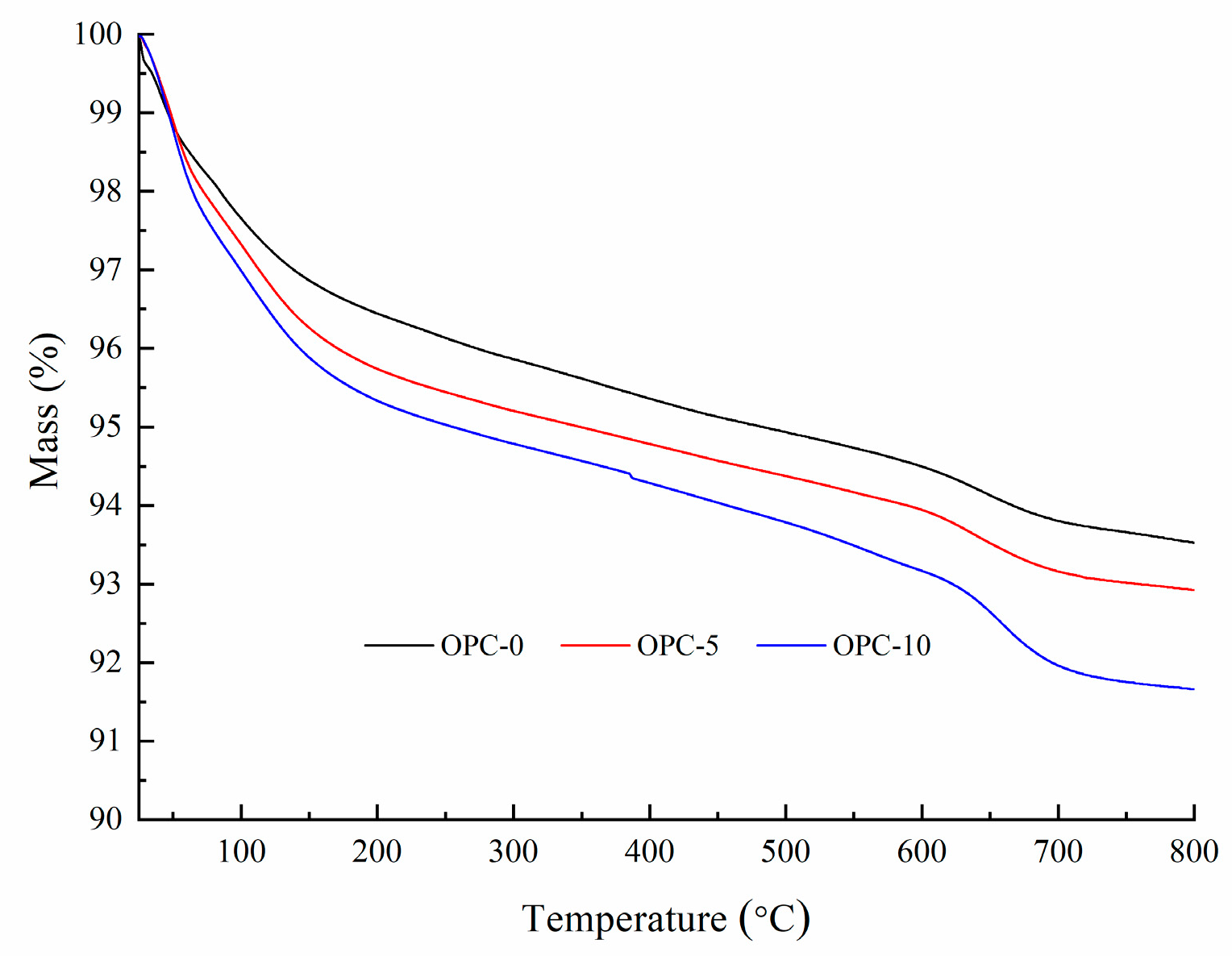
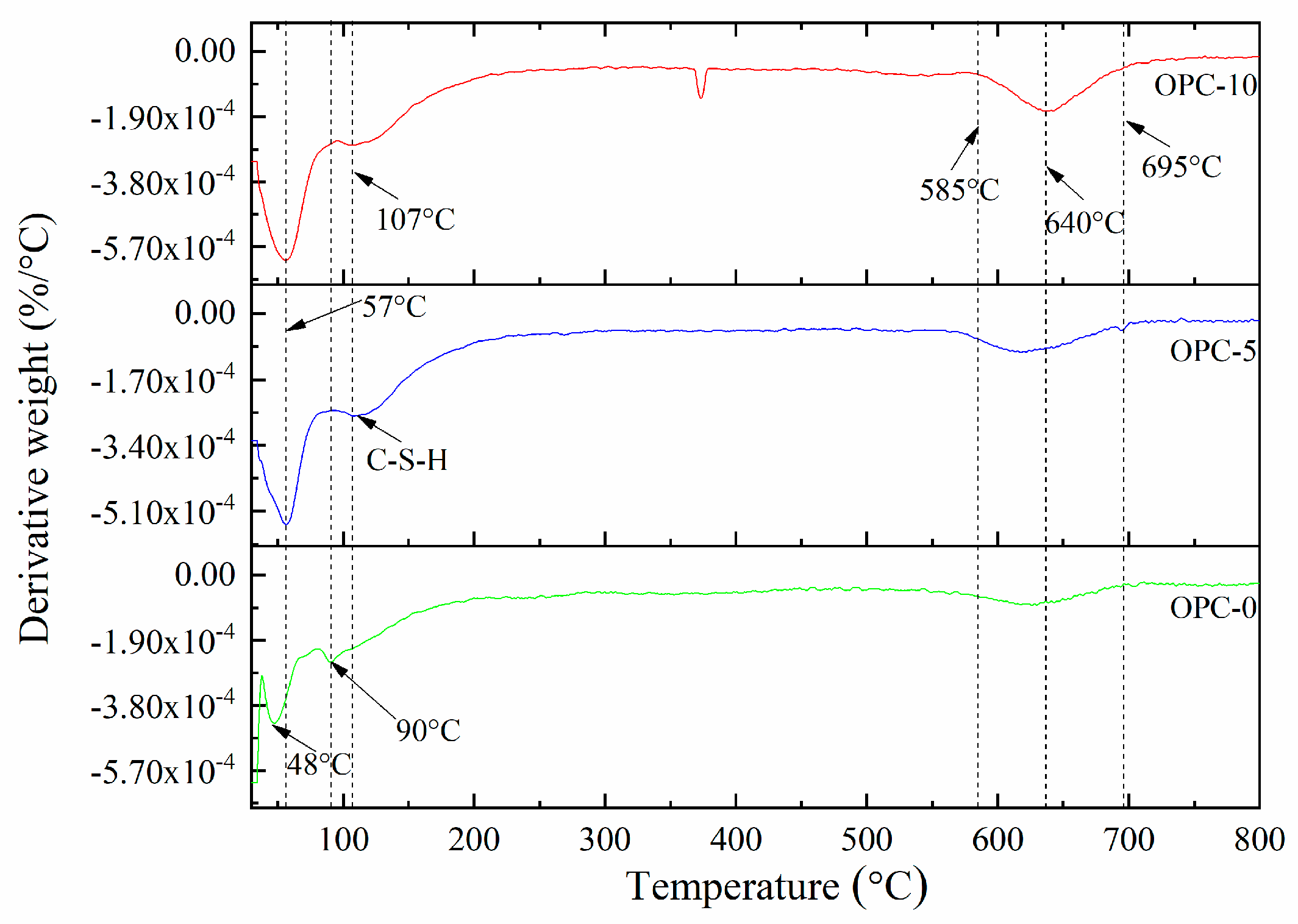
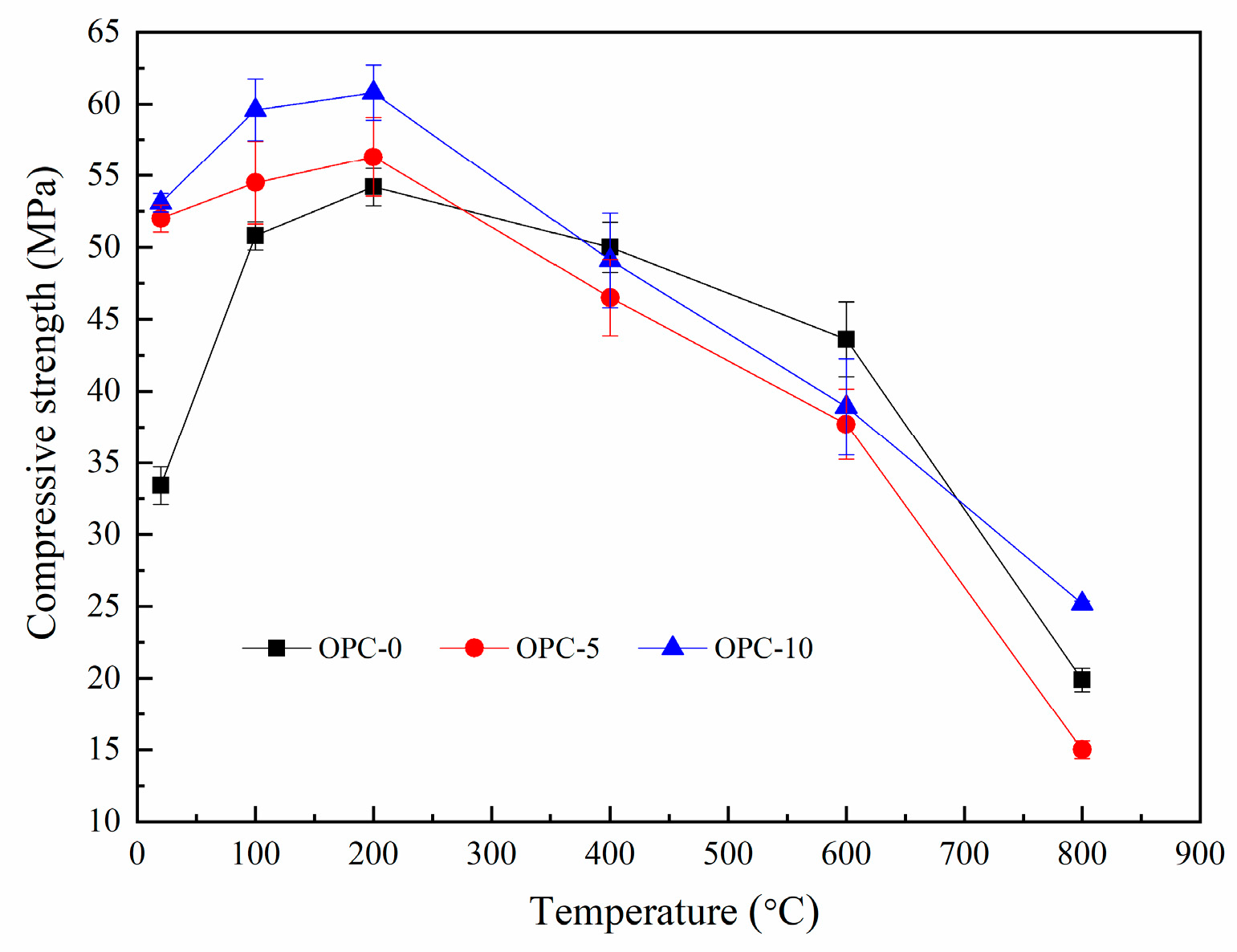

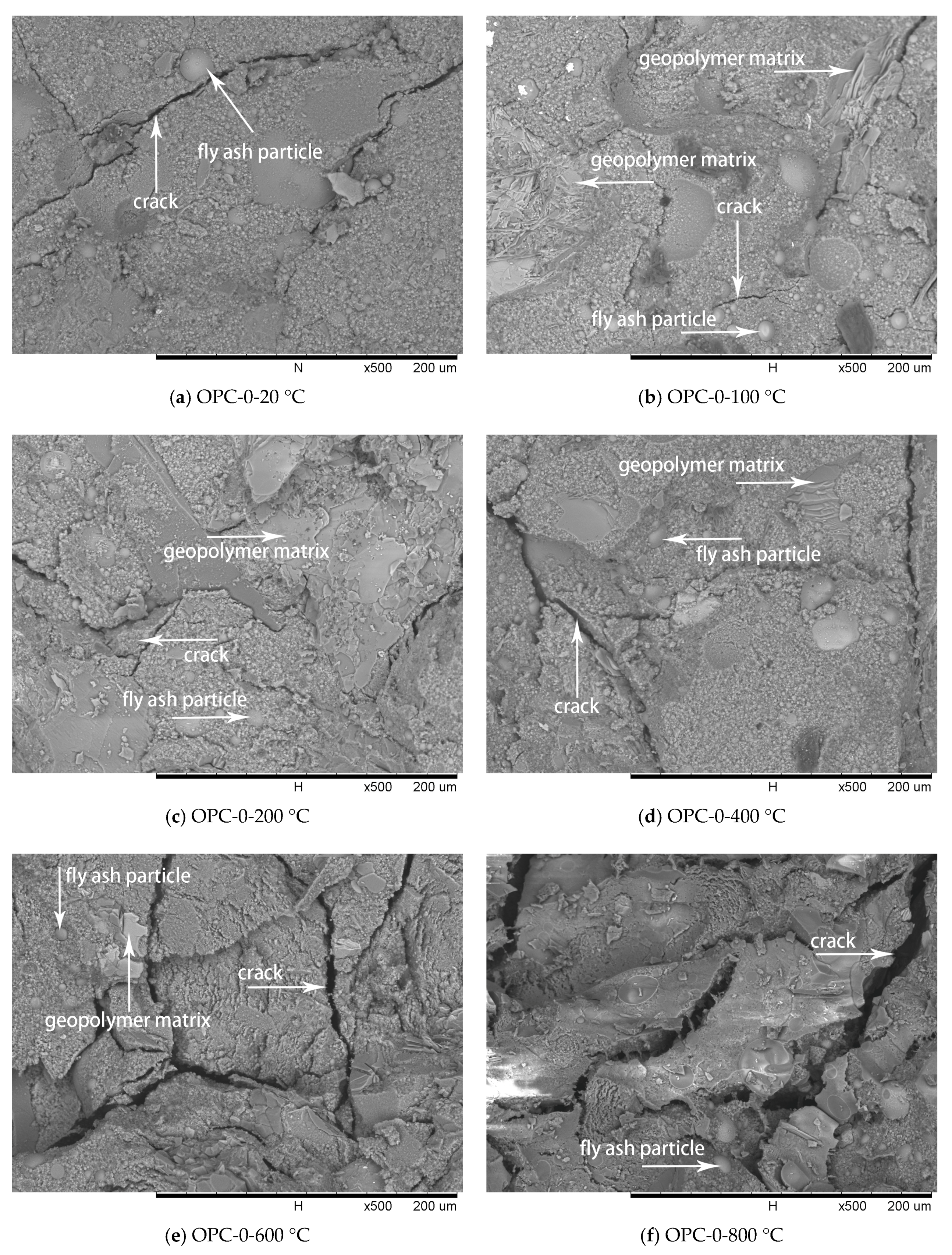
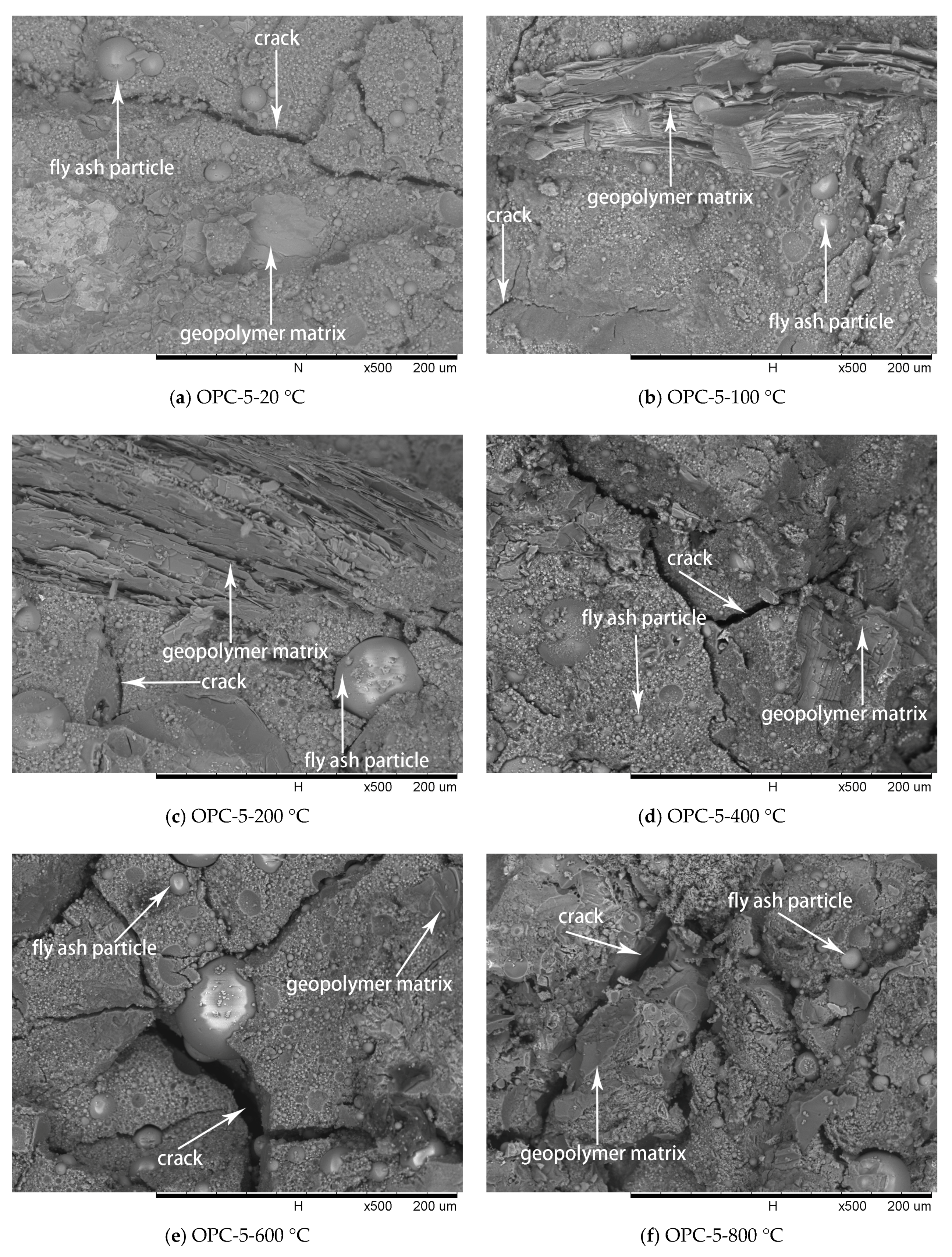
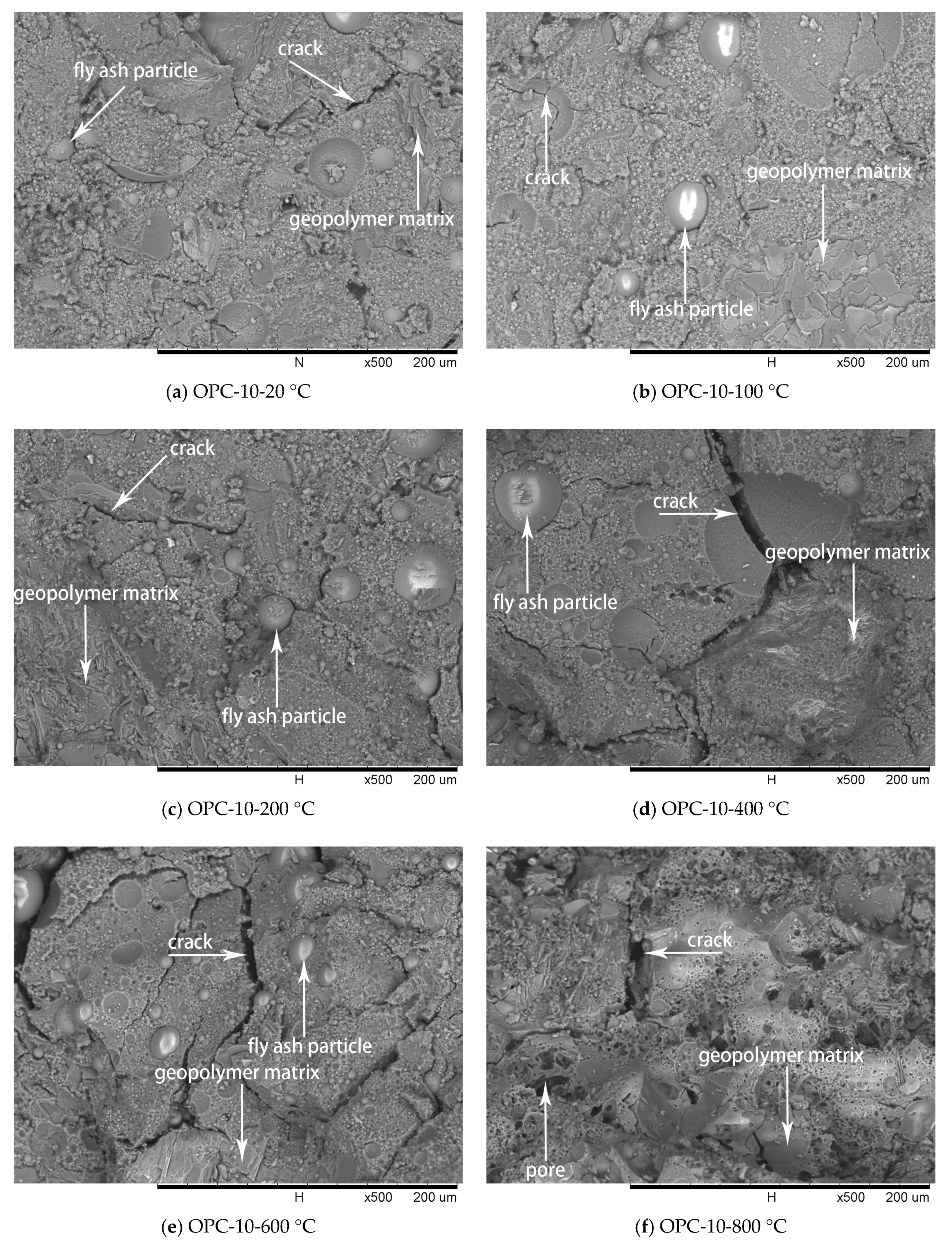
| Chemical Composition | SiO2 | Al2O3 | CaO | Fe2O3 | MgO | K2O | SO3 | TiO2 | Na2O | LOI † |
|---|---|---|---|---|---|---|---|---|---|---|
| Fly Ash (%) | 49.05 | 26.40 | 5.2 | 4.64 | 3.72 | 4.85 | 2.00 | 1.16 | 0.8 | 2.83 |
| Cement (%) | 17.78 | 2.49 | 63.67 | 2.5 | 3.09 | 0.46 | 4.77 | 0.80 | 0 | 4.53 |
| Mineral Composition | Ca3SiO5 | Ca2SiO4 | Ca2Fe1.40 Al0.60O5 | CaSO4 | CaCO3 |
|---|---|---|---|---|---|
| SemiQuant (%) | 44.55 | 38.61 | 3.98 | 6.92 | 5.94 |
| Mixture Design of the FAGC (kg/m3) | |||||
|---|---|---|---|---|---|
| Mixes | Coarse Aggregate | Sand | Fly Ash | OPC | Alkaline Solution |
| OPC-0 | 1172 | 539 | 459 | 0 | 200 |
| OPC-5 | 1172 | 539 | 436.05 | 22.95 | 200 |
| OPC-10 | 1172 | 539 | 413.10 | 45.9 | 200 |
© 2019 by the authors. Licensee MDPI, Basel, Switzerland. This article is an open access article distributed under the terms and conditions of the Creative Commons Attribution (CC BY) license (http://creativecommons.org/licenses/by/4.0/).
Share and Cite
Zhang, H.; Li, L.; Long, T.; Sarker, P.K.; Shi, X.; Cai, G.; Wang, Q. The Effect of Ordinary Portland Cement Substitution on the Thermal Stability of Geopolymer Concrete. Materials 2019, 12, 2501. https://doi.org/10.3390/ma12162501
Zhang H, Li L, Long T, Sarker PK, Shi X, Cai G, Wang Q. The Effect of Ordinary Portland Cement Substitution on the Thermal Stability of Geopolymer Concrete. Materials. 2019; 12(16):2501. https://doi.org/10.3390/ma12162501
Chicago/Turabian StyleZhang, Hongen, Lang Li, Tao Long, Prabir Kumar Sarker, Xiaoshuang Shi, Gaochuang Cai, and Qingyuan Wang. 2019. "The Effect of Ordinary Portland Cement Substitution on the Thermal Stability of Geopolymer Concrete" Materials 12, no. 16: 2501. https://doi.org/10.3390/ma12162501





